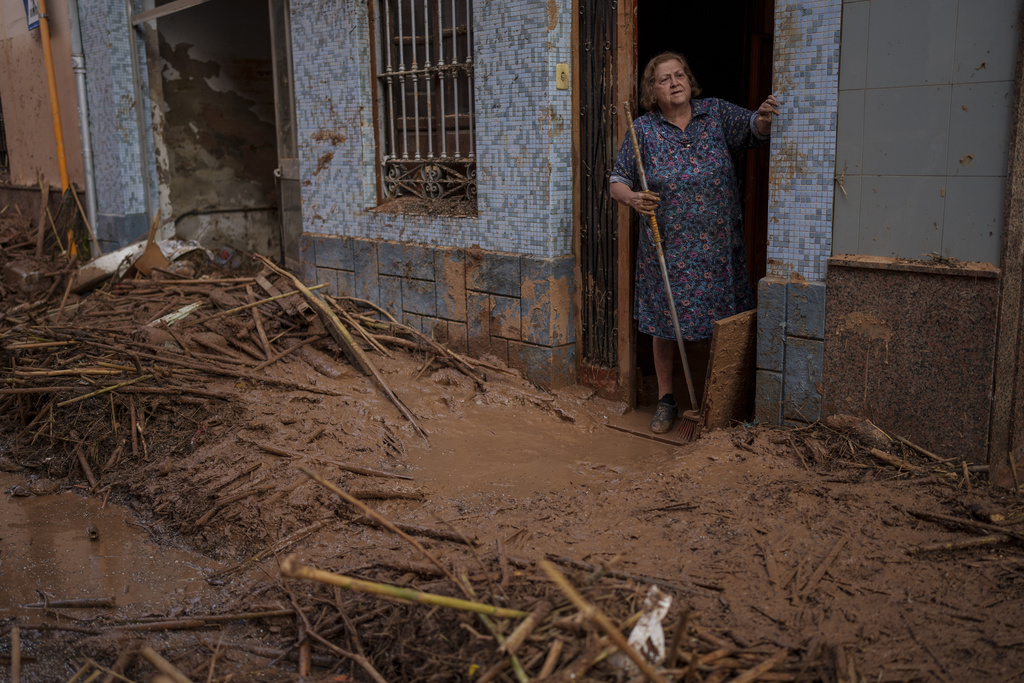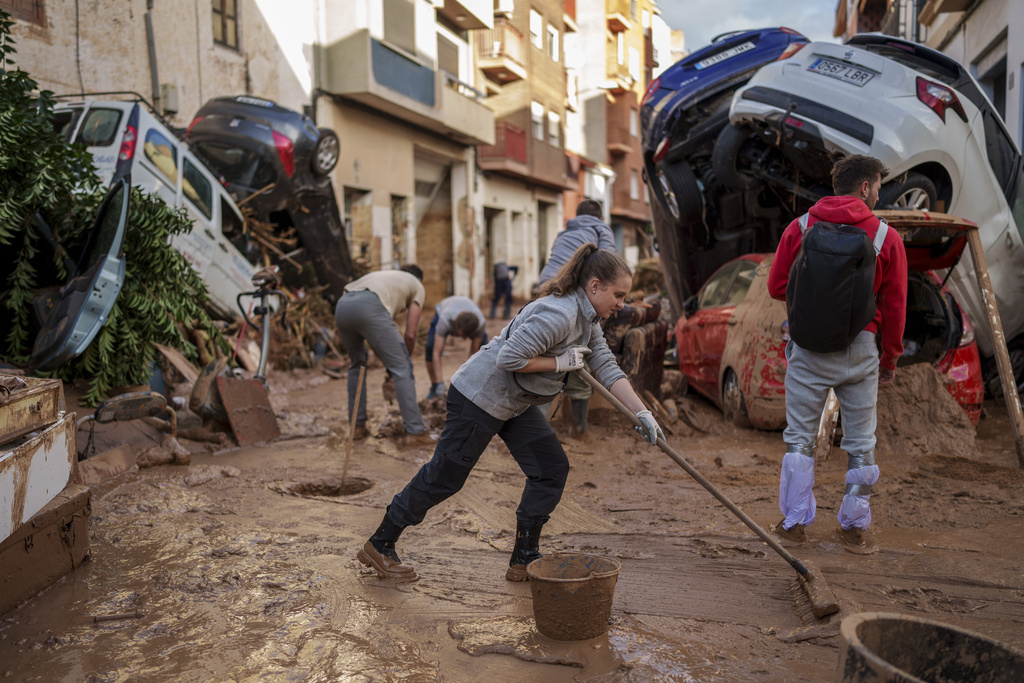Spain Floods Devastate Paiporta, Leaving Town and Lives in Ruins \ Newslooks \ Washington DC \ Mary Sidiqi \ Evening Edition \ In Paiporta, Spain, massive flash floods swept through homes, schools, and streets, leaving devastation and taking at least 62 lives in this small Valencia town alone. Volunteers and survivors grapple with thick mud and wreckage in what’s being called Spain’s deadliest natural disaster. Though cleanup and rescue efforts are underway, Paiporta residents face a long, painful road to recovery.

Spain’s Flood Disaster in Paiporta: Destruction and Recovery Efforts Unfold
- Flash Floods Devastate Paiporta: Floodwaters destroyed much of the town, killing at least 62 residents and leaving entire neighborhoods submerged in mud and debris.
- Heartbreak Amid the Wreckage: Families struggle with loss as volunteers flood in from nearby Valencia to help with cleanup.
- Delayed Warnings and Fatal Consequences: Residents received flood alerts hours after the water hit, with many caught off guard by the storm’s force.
- Emotional Scenes in a Town Transformed: Streets are impassable, and homes filled with mud, leaving survivors with little but memories of what they’ve lost.
- National Relief Efforts Continue: Thousands of soldiers, police, and volunteers are helping, but residents criticize the slow government response and lack of initial support.
Deep Look
The floodwaters have left Paiporta, a town of around 30,000 residents, in ruins, with at least 62 lives claimed here alone among a national toll of 211. The floods hit hardest in the eastern Valencia region, and Paiporta has been labeled “ground zero” of the disaster by local media, as it bore the brunt of the deluge. “We have lost everything,” said Xavi Pons, whose family has run a local daycare for half a century. As he pointed to knee-high mud lines on the walls, Pons described the extent of the destruction. “The water level was above my head inside the daycare,” he said, adding that the sight of his once-vibrant town covered in mud and debris was unimaginable.
In the heart of Paiporta, many streets remain impassable except to bulldozers, with debris-strewn pathways piled high with wrecked furniture, personal belongings, and overturned cars. The torrent left nearly every inch of the town coated in mud, making movement treacherous. Residents use poles and sticks to stabilize themselves as they make their way through the flooded streets, some barely recognizable due to the dense mud covering. The few remaining possessions include a washing machine tossed on its side in a church square, an ancient chest of drawers, and even a teddy bear, all half-buried in the thick, clinging mud that now defines the town’s landscape.
For those who managed to find safe vantage points, the sight of the town’s flooding was both surreal and devastating. Schoolteacher Lidia Giménez watched from her second-story apartment as the usually dry canal, known as “Barranco del Poyo,” transformed from an empty channel into a raging river within 15 minutes. She called the scene a “battlefield without bombs,” underscoring the scale and rapidity of the devastation.
The overwhelming flood widened the riverbank and tore through the town’s infrastructure, destroying buildings, pedestrian bridges, and guardrails. Among the wreckage, parts of an overturned truck remain visible, with only eight wheels sticking out of the mud in the Barranco del Poyo’s riverbed. The impact was nothing short of catastrophic, and local officials say that cleaning up the town will take weeks, if not months.
In the face of unimaginable destruction, the people of Valencia have shown solidarity, with thousands of volunteers from nearby areas walking over an hour to reach Paiporta. Armed with buckets, brooms, and shovels, they entered the town’s sludge-covered streets, working tirelessly to clear debris and help residents salvage what they could. Rafa Rosellón, a local homeowner, has been waiting for heavy equipment to clear two cars that were swept up by the flood and left piled against his front door. He described the frustration shared by many residents, saying, “The government forces that could do something, either from the regional government or the national government, have not done anything to help us. It’s us, the citizens and volunteers, who are doing all the work.”
As the search for missing persons continues, emotional moments are unfolding throughout Paiporta. For some residents, the loss goes beyond material possessions. A woman cleaning mud from her doorway broke down in tears when asked what she had lost, revealing, “I can’t find my husband, so all this doesn’t matter.” Her words capture the heartache shared by many who still hold out hope that missing loved ones will be found.
Even among the volunteers and survivors, the weight of the disaster is palpable. Along one street, marked by scattered reeds and wrecked cars, a man shouted from his flooded home, “There’s nothing more I can do!” The despair and helplessness are almost as thick as the mud that covers everything in sight. Nevertheless, volunteers continue to arrive each day, bringing not just their hands but a spirit of resilience, determined to support the town as it starts the long road to recovery.
As Paiporta’s residents, volunteers, and government teams work through the overwhelming task of cleanup, the Spanish government will face increasing pressure to assess and address the factors contributing to such extreme flooding. While national and regional officials rally to provide resources, the emotional toll for Paiporta’s residents will take far longer to heal. In the meantime, this tragedy has united a nation and drawn attention to the urgent need for robust disaster response and climate adaptation strategies across Europe.
For now, the focus remains on piecing together what remains in Paiporta, salvaging the memories of what once was, and beginning the painstaking journey of recovery, one bucketful of mud at a time.
Spain Floods







